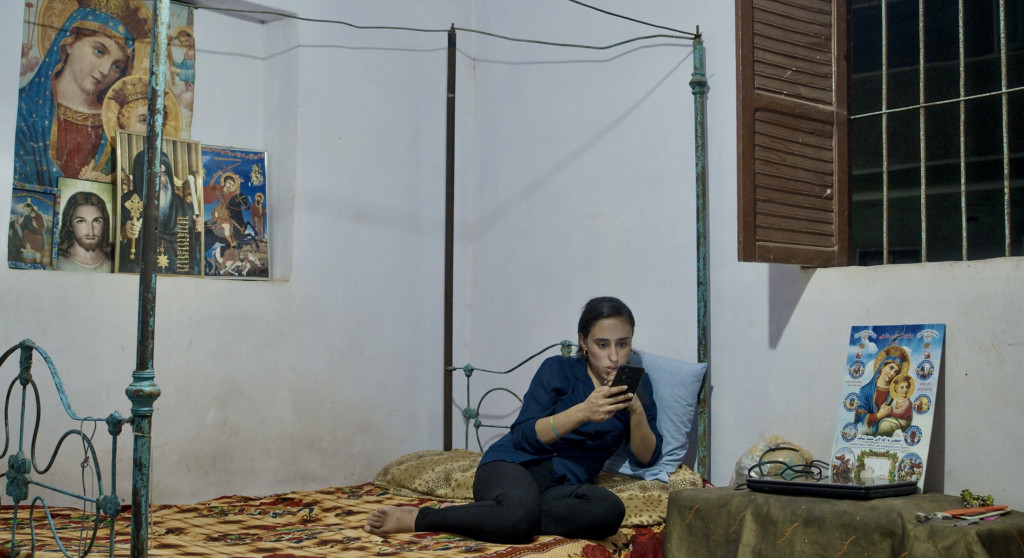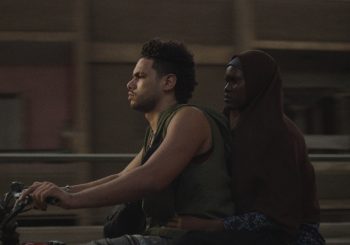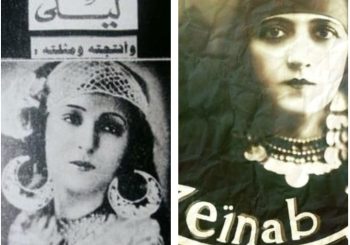SPOILERS AHEAD: The article discusses elements from the documentary.
Wherever our dreams may wander, and whatever paths they may lead us down, they ultimately guide us towards one direction — our authentic selves. Every dream reflects something deep within us, and even if we don’t fully realize them, merely touching the surface allows us to uncover parts of ourselves.
This central idea underpins the Egyptian documentary, The Brink of Dreams (2024). Earlier this year, it made history as the first Egyptian film to win the prestigious Golden Eye Award for Best Documentary Film at the Cannes Film Festival. Directed by Nada Riyadh and Ayman El Amir, the documentary premiered in Egyptian cinemas on November 6th and is still showing at local venues like Zawya.
The documentary focuses on a Coptic village in Minya, tracing the lives of a close-knit group of young girls—Majda Masoud, Monika Youssef, and Haidi Sameh—whose dreams were far larger than the challenging realities they faced. No matter how big their ambitions seemed, or how frequently they were ridiculed for them, these dreams breathed life into them—offering a space where they could venture into the unknown, diving deep into the mysterious waters, even if it meant risking drowning in them.
And this is how the documentary begins—a brief shot of the girls playing in the Nile waters, with the camera carefully framing their bodies as they skim the surface, never quite diving in, always staying just on the edge.
In this opening scene, the viewer is immediately confronted with the stark contrast between the depth of the Nile’s waters and how the girls only ever dip their feet in, never fully immersing themselves.
This visual metaphor mirrors their journey throughout the documentary, where they never fully realize the depths of their dreams or their true selves. There was always so much more to explore, so much untapped potential, but there was always a barrier, an invisible edge, keeping them from diving deeper.
Making art is a uniquely human act
At first glance, the documentary might appear to follow a familiar theme about rural girls overcoming societal constraints through theatre, singing, and dance. But, it is also far deeper than that, as despite coming from disadvantaged and challenging backgrounds, the girls convey universal emotions and messages that resonate with all people, regardless of their circumstances.
The documentary, in many ways, highlights that creating art is fundamentally a human act — an act that allows us to reconnect with our true selves, to understand ourselves more deeply, to discover what stirs us, what inspires us, and what challenges us. Regardless of where someone lives or their religious or political views, there are universal human truths conveyed through art that resonate with everyone—truths that, even if not always practiced in daily life, still find common ground when expressed through creative work.
For instance, throughout the documentary, the girls don’t simply pick a random subject for their theatre. Instead, they look inward and ask themselves a series of questions – what dreams do I hold deep within, and what do these dreams reveal about who I am? They gather in a circle, sharing their stories, and as they listen intently to one another, they uncover deeper layers of each person. Majda, for example, shares the story of her struggle to break free from a confining environment, only to find that escape remains out of reach.
As they open up and share their stories, connecting more deeply with their true selves, they begin to express why art holds such significance for them. Monika, for example, shares her passion for singing and how it empowers her to find confidence in her voice, which was once mocked for being too deep. Each girl finds comfort and healing through art, addressing a unique pain or challenge held deep in her heart.
They don’t just create art—they create a space where they can explore their identity and make sense of the world around them.
However, the documentary does not shy away from confronting class issues within the art world, particularly the divide between artists in Egypt. It highlights how the cultural and creative sectors often marginalize individuals from working-class backgrounds, with women facing additional layers of exclusion. Social mobility has long been a challenge in this field, resulting in a landscape largely dominated by those from privileged social backgrounds.
It contrasts the raw, authentic approach to art taken by many of the artists with the commercialized and superficial nature of modern art, especially as it pertains to the upper class. In one scene, for example, Majda and Monika reenact an interview between a journalist and a famous singer, mocking how art has been reduced to a commodity—where fame and profit often overshadow the deeper, human essence of creative expression.
For these girls, art is a deeply human and raw form of self-expression, not a pursuit driven by profit. In fact, none of their performances bring them any financial gain, yet they continue to perform in the streets for their community, even if only a few people catch a glimpse from their windows. One might wonder: why do they keep performing if they gain nothing from it? This is exactly the question the documentary seeks to explore—challenging the idea that every action or effort must have a monetary value attached to it.
Removed from the noise of society and the pressures of daily life, where moments to breathe are rare, their performances become a vital breath of life, for both themselves and their community. Through their art, they find a way to explore the unanswered questions within themselves and, more crucially, to speak out against the injustices inflicted upon all people.
Even though no one took them seriously, and there was a minimal response from those who saw their street performances, it didn’t matter to them. What truly mattered was that they were able to express a deeply human message through their art. Whether or not it resonated with anyone, the act itself allowed them to release emotions that had been hidden and trapped, transforming the unheard into heard, the unseen into seen, and the unexplored into explored.
Working class ambition
After following the artistic journey of these girls, one might expect the typical narrative arc where each girl eventually achieves her dream— a familiar plot that promises achievement, ambition, and success, especially since the girls express such strong desires early on. Audiences often crave stories of accomplishment, particularly when the characters show so much hope and drive.
However, the documentary takes a different approach, offering a more realistic portrayal of ambition in communities with limited resources. The film doesn’t portray the girls as lazy for not fully pursuing their dreams, nor does it criticize those who chose motherhood over careers. Instead, it challenges the stereotype that the working class lack ambition or drive, illustrating that sometimes external circumstances are simply beyond an individual’s control.
Using the visual metaphor in the opening scene, where the girls dip their feet into the Nile’s waters, the documentary highlights the heavy price the working class must pay to pursue their dreams — caught between the choice to either stay afloat or risk drowning. While most girls choose to stay afloat, Majda opts to dive deep into the uncertainty, daring to chase her dream by traveling alone to Cairo without telling her family.
The documentary leaves Majda’s fate uncertain, concluding on an open note. The final image of her seated among strangers in a crowded minibus symbolizes the ambiguity of her future. In a world that glorifies ambition, this film offers a more nuanced perspective, questioning the romanticized notion of ambition and highlighting the systemic barriers that can thwart working-class dreams.
Was it all just a waste of time, then? What was the purpose of their dreams? The true value of those dreams, however, wasn’t in their fulfillment, but in how they helped the girls reconnect with their humanity. In doing so, they inspired others in their community to embrace art as a form of self-expression, as the documentary ends with a new generation of girls who imitate the original theatre troupe, showing that even small steps can plant seeds for future change.
Their legacy isn’t defined by what they personally accomplished, but by what their dreams brought into being: a space where people can create honest art and voice their struggles, giving form to injustices that might otherwise go unheard.








Comments (0)